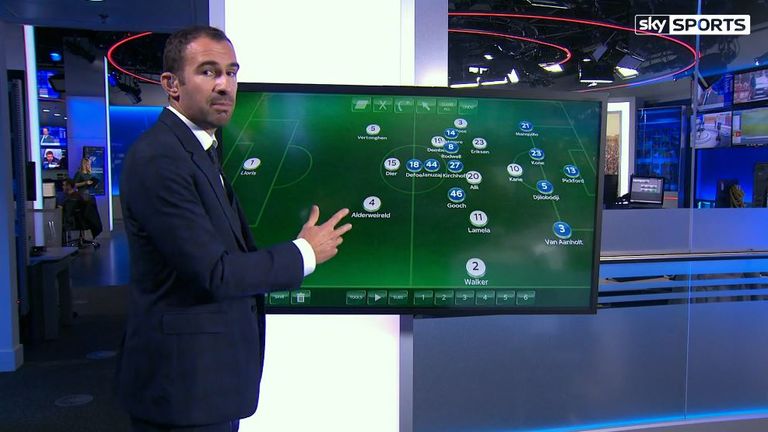Zonal marking or man-to-man? Danny Higginbotham explains
Monday 10 October 2016 10:18, UK
Sky Sports’ tactical expert Danny Higginbotham explains the relative merits of zonal and man-to-man marking before offering a solution to the problem…
The familiar debate about the merits of zonal marking has flared up again following a spate of defensive errors from set-pieces.
A summer directive to referees put the spotlight on shirt-pulling from corners and Stoke were twice punished with penalties for fouls committed as the ball made its way into their area.
Those infringements forced Mark Hughes to consider switching to zonal marking but Liverpool are among a number of clubs already struggling at the back using that method.
Indeed, at the current rate, the 2016/17 campaign is set to see more goals conceded from set-pieces than any of the previous five seasons. So what's the solution?
As former Stoke defender Danny Higginbotham explains, it's not necessarily a case of one method or the other. Both have their benefits - but getting the balance right is the tricky part.
"Managers are worried about players holding shirts, getting blocked and opponents getting into areas that are really troublesome for defenders," says Higginbotham.
"What we've seen is that teams are going with zonal marking and it's causing a lot of problems.
"The problem that you have is that these players are more or less stood in a line. When you're doing zonal you'll tell the person stood next to you to stretch their hands out.
"You should then be touching their hands. What that's supposed to do is stop gaps appearing for the opposition players to run through.
"But as we've seen with a few teams this season, with Stoke City and even Leicester City at times, is that opposition players are getting into positions that can cause real problems.
"I know as a defender if I'm marking zonal, I've got a standing start. The opponents are giving themselves a run and so there's only going to be one winner."
Higginbotham believes that there is a benefit in giving players responsibility to mark another individual rather than allow excuses to be made.
"In the dressing room before a game you know the man you are going to mark," he says. "If you've got a man and he scores then you know you're in for it at half-time.
"When you play zonal, players will go into the dressing room, whether at half-time or full-time, and are going to be saying, 'He's gone out of my zone, he's gone out of my area'."
However, Higginbotham believes there are advantages to zonal marking. "What zonal will stop is people pulling shirts and stuff like that," he adds. "The other thing it will do is stop people being blocked."
As a result, Higginbotham's preference is for a hybrid system that fuses elements of both the zonal and man-to-man systems.
That's what Stoke used during his time at the club, conceding only 16 goals from set-pieces in 2010/11 - in contrast to the seven conceded in their opening six games of 2016/17.
"The way we used to do it at Stoke City, we were quite successful at it in terms of not conceding many goals," says Higginbotham.
Tony Pulis' Stoke would have three zonal men - one at the front, one at the centre "making sure that the man can't get close to your goalkeeper" and another one at the far post.
"What I'd be saying is that we go back to the first scenario where you have a few zonal markers," he adds.
"If there's a problem where you have a player in your team who is prone to pulling shirts, you let him become the zonal one and give him the space to run into and attack the ball.
"It's another situation for teams to resolve and it's just a case of getting the best of both worlds without confusing players too much."






